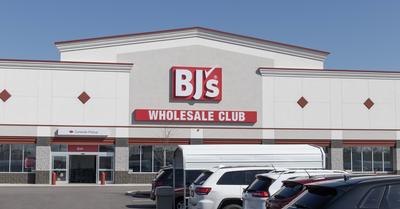Table of Contents
What Are the General SNAP Eligibility Requirements?
SNAP is a federal program spearheaded by the USDA, but those who seek its benefits must apply in their current state of residence. Their incomes and assets must also fall within certain specified ranges in order to qualify. The government updates these income and resource levels each year, so it’s important to check what the current SNAP income limits are on an annual basis.
There are limits for both gross (meaning total income without any exclusions or deductions) and net (meaning after subtracting deductions from gross income) income levels that must be met. Households that have at least one elderly or disabled individual must only meet the limit for net income. This can be helpful for senior citizens who hope to receive nutrition assistance.
Once you apply for SNAP benefits, the specific state agency will assess your eligibility to receive benefits. If your state determines that you qualify, they will backdate the benefits you receive to the date you originally filed your application rather than the date they determine you are eligible.
What Special Food Stamp Rules Apply for the Elderly or Disabled?
Special rules apply for those who are elderly or disabled and apply for food stamp benefits. The SNAP program defines those who are age 60 and older as elderly. To qualify as a disabled person, an individual must meet at least one of the following requirements:
- Collect federal blindness or disability income via the Social Security Act (Social Security disability payments, Supplemental Security Income (SSI), or blindness payments OR
- Collect state blindness or disability income under SSI regulations OR
- Have a permanent disability and collect disability-based retirement income from a government agency OR
- Collect a Railroad Retirement Act annuity and either qualify as disabled per the SSI or be eligible for Medicare OR
- Be a totally disabled veteran or one who is considered permanently homebound or in need of regular attendance and aid OR
- Be the surviving child or spouse of a permanently disabled veteran who receives VA benefits.
Typical households should possess no more than $2,500 in countable resources, like money in a bank account or cash; whereas households with at least one elderly or disabled member may have up to $3,750 in countable resources. Some resources are not considered when deciding whether a household is eligible for SNAP benefits, such as:
- Homes and lots
- Resources of people collecting Supplemental Security Income (SSI)
- Resources of people collecting Temporary Assistance for Needy Families (TANF, which is sometimes called welfare)
- The majority of pension and retirement plans (but withdrawing funds from such accounts could count as resources or income in certain situations)
Households for SNAP eligibility purposes consist of those individuals who reside, purchase food, and prepare meals together--like spouses and most children age 21 and younger. This is true even in cases where these individuals buy and prepare their meals separately.
However, elderly individuals who are permanently disabled and unable to buy and prepare their own meals separately may qualify as a separate SNAP household from their spouse if the others they live with make no more than 165 percent of the poverty level in income.
In most cases, those who receive the majority of their meals from an institution cannot qualify for SNAP benefits. Certain exceptions do apply. Elderly residents of federally subsidized housing could qualify for SNAP benefits, even if the facility provides them meals. Likewise, disabled individuals who live in small, nonprofit group homes of 16 or fewer residents could qualify for SNAP benefits, even if the group home provides them meals.
What Deductions Can Senior Citizens Make for SNAP?
Certain deductions are allowed when determining eligibility to receive SNAP benefits, some of which are specific to elderly or disabled household members. Others apply to all household members, whether or not they are considered elderly or disabled. The following deductions are allowed under SNAP:
- 20% of earned income
- Dependent care deductions when necessary for education, training, or work
- Standard deductions in the amount of $177 for 3 or fewer people and $184 for households with 4 individuals or more (higher deductions could be allowable in Alaska, Hawaii, and Guam)
- Medical costs for disabled or elderly individuals when they total more than $35 each month and are not covered by insurance or another person
- Legally owed child support, in certain states
- Standard shelter deductions for households considered homeless, in certain states
- Certain excess shelter costs.
Elderly and disabled household members who must pay more than $35 in medical costs each month that are not covered by either another person or health insurance are allowed to deduct certain allowable expenses:
The SNAP program allows for certain excess shelter costs to be deducted when determining eligibility. Shelter costs allowable under this program include:
- Electricity
- Water
- Fuel for cooking and heating
- The fee for one basic telephone
- Mortgage or rent fees, plus interest
- Home taxes
In some states, only a predetermined amount may be deducted for utility costs, rather than actual amounts paid. There is a $597 cap (higher in Alaska, Hawaii, and Guam) on the amount of shelter deductions allowed unless at least one household member is elderly or disabled. In those households, the deduction limit for all shelter costs is capped at half of the household’s income.
Can Senior Citizens Get Help to Apply for Food Stamps?
The National Council on Aging (NCOA) reports that fewer than half of the qualifying number of adults aged 60 years and older enroll in SNAP. It further states that the food stamp program is one of the best methods for fighting food insecurity in the US. This is a big driver behind NCOA’s efforts to create a SMS texting campaign to help seniors apply for SNAP benefits online.
NCOA has been hard at work since 2013 to not only understand the reasons behind low SNAP participation numbers among eligible seniors but also to help increase SNAP enrollment among older adults. According to this organization, most seniors who fail to enroll are opting out of the program because the application process just seems too difficult.
The actual application may seem long and requires quite a few verification documents to achieve the maximum amount of benefits allowed. NCOA actually funds multiple organizations in various states to help seniors fill out and submit SNAP applications. It also provides a method for older adults to receive updates and reminders via text messages. Interested seniors simply need to provide a cell phone number to enroll so they can receive:
- Reminders for both filling out and sending in their SNAP application
- Follow-up messages to help prepare for a SNAP interview
- Useful tips for what to spend their SNAP benefits on
- Links for further information on other NCOA programs
The website DailyCaring.com shared a list of 7 key food assistance facts associated with SNAP benefits for seniors. One of those is that the average SNAP benefit awarded to senior citizens is $105 each month. An important factor in maximizing SNAP benefits is to take advantage of all allowed deductions. For instance, only 16% of eligible seniors take advantage of the excess medical expense deduction. Using this deduction, when allowable, can help increase the benefit amount awarded each month.
Senior citizens who wish to apply for food stamps can access the information for all 50 states in the SNAP State Directory of Resources. There are also convenient links to online applications for those states that allow them to be submitted online. Each state agency that runs the SNAP program in their jurisdiction should be able to provide further assistance on how to apply for food stamps.
Recent Articles


















